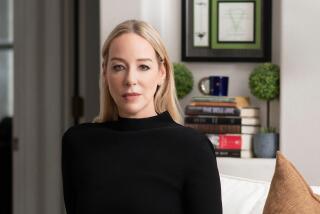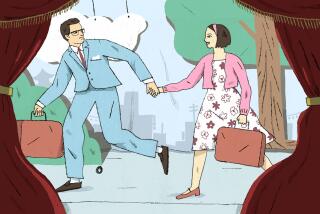Annette Baran dies at 83; crusader for open adoption
Living with a secret is psychologically destructive — that concept was nearly an anthem for Annette Baran, a clinical social worker and psychotherapist who co-wrote “The Adoption Triangle,” an influential 1978 book credited with giving early shape to the open-adoption movement.
Baran died July 11 at St. John’s Medical Center in Santa Monica of complications from an infection, said her son Joshua. She was 83 and lived in Santa Monica.
“If there ever was an activist who changed the world of adoption, it was Annette,” said Joyce Maguire Pavao, founder of the Center for Family Connections, an educational and counseling center in Cambridge, Mass., that specializes in adoptions.
From the late 1950s to 1974, Baran was director of adoptions at was then called Vista Del Mar Child-Care Service in West Los Angeles and placed more than a thousand babies, her family said.
Her acceptance of working in an era of sealed records and secrecy surrounding adoption eroded after a birth mother insisted on meeting the potential adoptive parents, Baran later said.
As Baran watched the back-and-forth between the couple and birth mother, she said she thought, “This is pretty good. Why does this have to be secret?”
As time went on, she also encountered many adoptees searching for their birth mothers who were in psychological pain, said Betty Jean Lifton, an adoption reform advocate.
“She thought, ‘Oh my god, what have I done?’ It really radicalized her,” Lifton said. “She was waking from the great sleep that social workers were in and realizing how secrecy in closed adoption affected people.”
Moved to crusade for open adoption, Baran joined a novel research project started by a UCLA psychiatrist, Dr. Arthur Sorosky, who noticed that his patients who had been adopted tended to have identity problems. Another Vista Del Mar social worker, Reuben Pannor, collaborated with them.
When they solicited opinions on open adoption — the idea that birth parents and adopted family know who each other are — they received more than 600 letters and interviewed many of the writers.
“The Adoption Triangle: The Effects of the Sealed Record on Adoptees, Birth Parents, and Adoptive Parents” resulted from that study. It helped popularize the argument that an adoptee’s knowledge of birth parents is crucial to his or her identity.
Adopted adults “told us the reunion with birth parents made them feel normal and whole, for they finally experienced genealogical connections,” the researchers wrote in 1980 in a letter to The Times.
For birth parents, there is “always a lingering pain for that child given up for adoption,” they wrote. “Birth parents do not know if that child is alive or dead, well or ill.”
“All adoptees, if they have a shred of intelligence, have to assume somebody dumped them,” Baran told the Chicago Tribune in the 1985, displaying the forthrightness that was a hallmark. Knowing about their background can ease those fears, she said.
The book significantly altered people’s attitudes about adoption, according to several histories of adoption in the United States. The authors “quickly became the intellectual patron saints of the adoption rights movement,” E. Wayne Carp wrote in the 2000 book “Family Matters.”
Today, varying levels of open-adoption practices have become the norm, said Chuck Johnson of the National Council for Adoption.
In the early 1980s, Baran was again ahead of her time when she began investigating the secrecy surrounding birth by artificial insemination, colleagues said.
With Pannor, Baran interviewed donor offspring, donors and parents years after the fact and wrote the 1989 book “Lethal Secrets: The Shocking Consequences and Unsolved Problems of Artificial Insemination.” The authors advocated for a child’s right to know and were critical of the business of artificial insemination.
“No child is the product of a teaspoon full of sperm,” Baran said more than once while arguing that donor records should be made public. “A child has a father — a genetic father. And to be denied half of one’s genetic origins is really unfair.”
She was born Annette Dolinsky on Jan. 7, 1927, in Chicago to house painter Hyman Dolinsky and his wife, Lillian. Her brother, Meyer Dolinsky, wrote for television.
Growing up, she spoke Yiddish as her first language and as an adult hosted a Yiddish-speaking group in an effort to keep the language alive.
At UCLA, she earned a bachelor’s degree in social work and followed it with a master’s in the same subject at USC.
After working at Vista Del Mar, Baran directed an adolescent drug treatment program at UCLA, and as a psychotherapist in private practice often counseled adoptees.
“She became the Joan of Arc of open adoption,” her son said. “To the adoptees, she was their hero. At conferences, they would cheer her and weep.”
In addition to her son Joshua, she is survived by her husband of 62 years, architect Ephraim Baran; another son, David; a daughter, Naomi; and two grandchildren.
More to Read
Start your day right
Sign up for Essential California for the L.A. Times biggest news, features and recommendations in your inbox six days a week.
You may occasionally receive promotional content from the Los Angeles Times.







